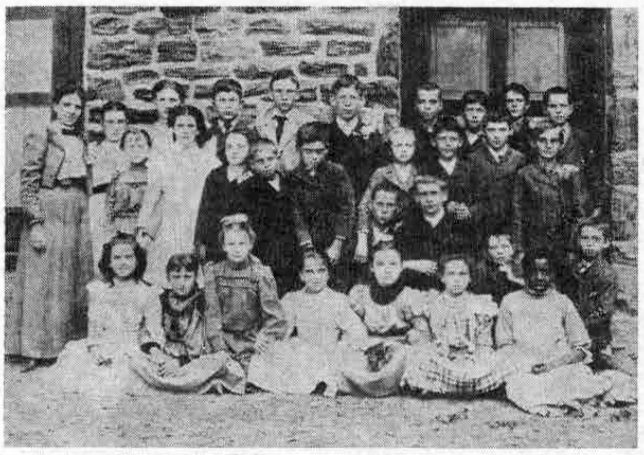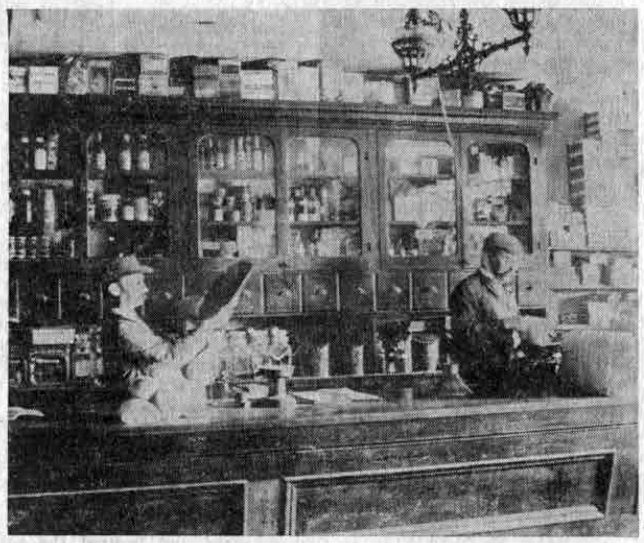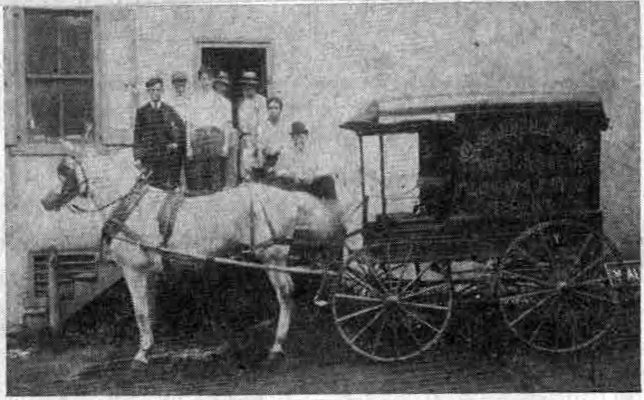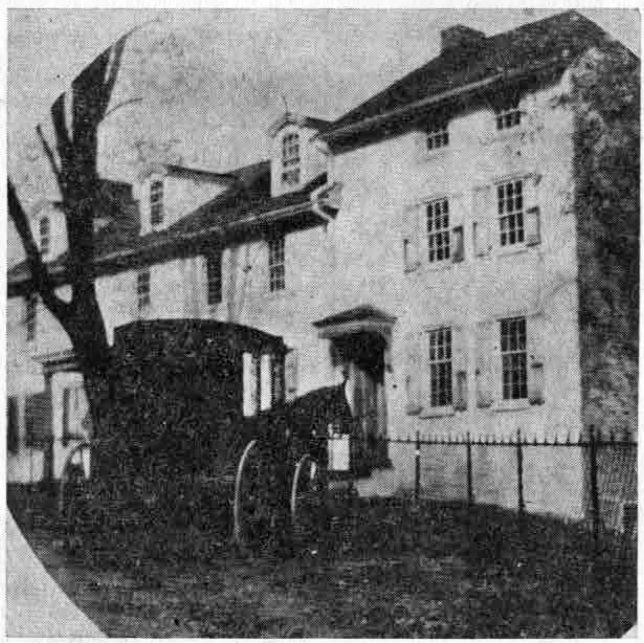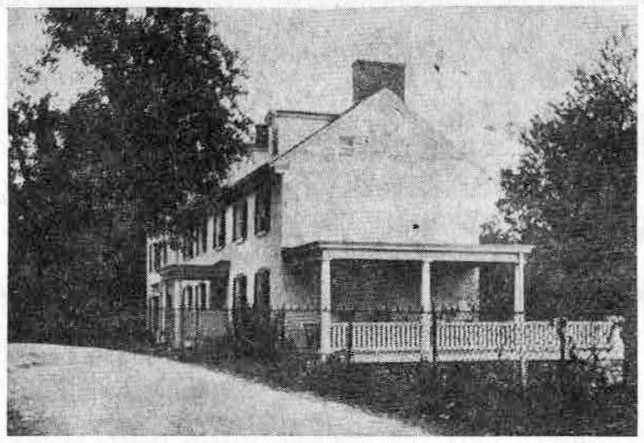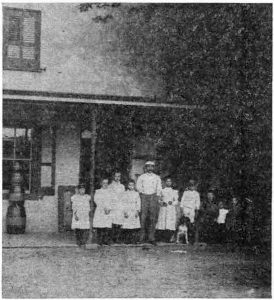 Continuing the story of Radnor in the late 1800’s and early 1900’s, the accompanying picture shows a group assembled on the porch of the General Store on King of Prussia road. The man in the center of the picture is Captain John G.W. Dillin, now a resident or Drexel Hill, who celebrated his 94th birthday on the 28th of July.
Continuing the story of Radnor in the late 1800’s and early 1900’s, the accompanying picture shows a group assembled on the porch of the General Store on King of Prussia road. The man in the center of the picture is Captain John G.W. Dillin, now a resident or Drexel Hill, who celebrated his 94th birthday on the 28th of July.
Famous for his extensive knowledge of guns, Captain Dillin has published a book widely read by sportmen, called “The Kentucky Rifle.” He was also an authority on rabies in a day when little was known of that disease. He published a 20-page treatise called “Rabies Past and Present.” which contained “the account of 35 cases of rabies in dogs, horses, cattle and swine, beginning 1864 and ending about 1922,” according to an advertisement concerning the pamphlet.
Of himself Captain Dillin has this interesting bit to say in the foreword of the treatise:
“I was born July 28, 1860, near Valley Forge (where my two grandfathers endured the hardships with General Washington) in a log cabin farm where I lived for 25 years. I acquired my three R’s at a little stone school house called Carr’s School, located near what is now the town of Wayne. I can remember that we used pokeberry juice for ink, and I hated school and took every opportunity to evade going. I quit school when I could read in the fourth reader.
“During my life time, I have been a farmer, storekeeper, lumberman, woodsman and big game hunter. I have soldiered with the National Guard of Pennsylvania, and have been both member and coach of many National Military rifle and revolver teams. As a naturalist, I am known as an authority on the extinct Passenger Pigeon. I am the author of the book entitled ‘The KentuckyRifle’ and am a lover of fiddles and firearms.”
The children standing on either side of Captain Dillin in the picture, include Dorothy Wolf, Ethel Morris and Ida Morris, all former residents of Radnor.
In the June 25, 1954 issue of “The Suburban,” an interesting old picture of Dillin’s store was published in this column. At that time it was stated that neither the date of the picture or the identity of the men or boys in it was known to your columnist. Ray Yocom now gives the date as 1898, and in the foreground of the picture are Tryon Lewis from Ithan, and to his left, his horse and buggy in which he made daily trips to Dillin’s store. The boy next to Mr. Lewis is Mr. Yocom. The gentleman with the cane and beard was Peter Pechin who owned a farm on King of Prussia road. His son was Nate Pechin, one time sheriff of Delaware County who passed away not so very long ago.
The picture was taken by Lucy Sampson, of Berwyn, according to Mr. Yocom. This is the first indication of the sex of the “photographic artist” who made several of the pictures already illustrating this column. It is interesting to know that “L.A. Sampson” was a woman in a period when women in any field of business were the rather rare exception. In the early 1900’s this picture of the Old Store made one of the very popular postcards of its time, as shown by the number which were mailed to Mr. Yocom in his California home, and which have been preserved by him all these years.
Another matter of slight confusion has been cleared up by Mr. Yocom’s notes. In the early 1900’s Charles A. Dillin, father of Oscar and John Dillin, operated a grocery store in the lower part of the old Red Lion Inn in Ardmore. Some records have stated that the Old Store in Radnor was once called the Red Lion Inn, an error which could easily be made because of the duplication of the Dillin name in stores in both Radnor and in Ardmore.
(To be continued)

